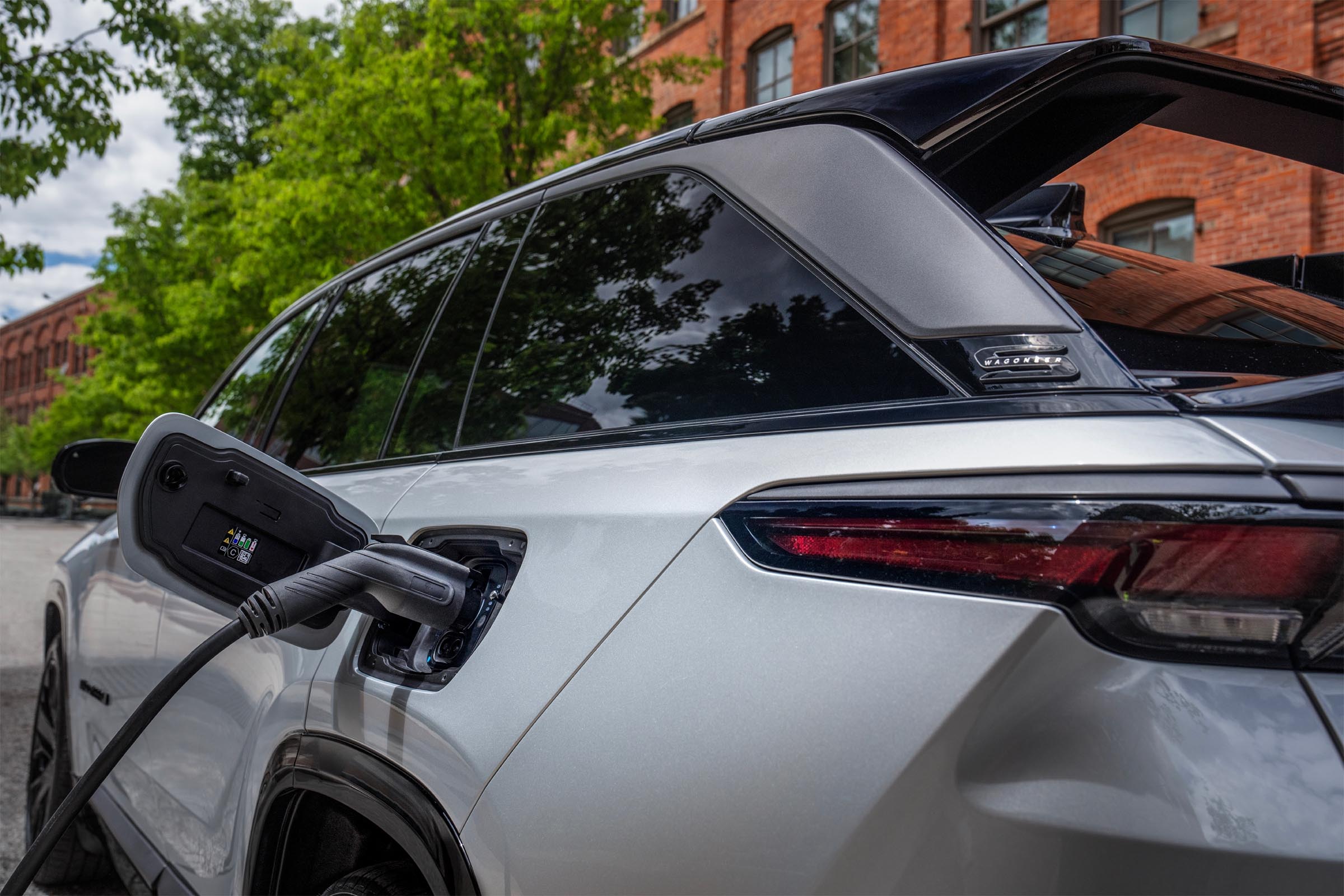Automakers suffered saw a sharp drop in electric vehicle sales during October as federal EV tax credit ended. But even sales of gas models leveled off as prices, driven higher by Trump’s auto tariffs, drove many mainstream buyers out of the market. As Headlight.News reports, the industry has become more dependent than ever on affluent households for new sales.
The end of EV incentives cost automakers sales in October — though the popularity of hybrids helped manufacturers reporting monthly to squeak through the month with overall steady sales.
Ford Motor Co. and the South Korean brands Hyundai and Kia reported significant declines in the sales of pure EVs. But Japanese brands reported a solid month despite the concerns about the end of the $7,500 federal tax credit, which ended October 1. Republican critics of the tax credit claimed it was unnecessary and favored affluent families from prosperous regions over Americans of more modest means.
Perhaps, but the industry is starting to feel the impact of rising prices driven by Trump auto tariffs on imported autos and auto part, with manufacturers more than ever dependent upon those highline buyers.
Japanese brands enjoy good month
Toyota and Lexus reported their best October ever, according to the latest sales reports, Toyota Motor North America sold 207,910 vehicles, up 11.8% on a volume basis. Toyota Division sales for the month totaled 178,240 vehicles, up 11.8%, while Lexus Division sales totaled 29,670 vehicles, up 11.7%.
Toyota has struggled to gain a foothold in the EV market, with less-than-stellar sales of the bZ4X and Lexus RZ, but it is a power hitter in the hybrid segment, gas-electric powertrains offered on all but two of the Toyota division products. Overall, the automaker’s electrified sales, including hybrids, totaled 93,670 vehicles, up 0.3% on a volume basis representing 45.1% of total sales volume for the month, TMNA reported.
American Honda sales totaled 111,095 units in October, Honda brand totaled 100,030 in October sales – surpassing the 1 million mark in the tenth month of the year, up 3.8% year-to-date, with strong sales across the lineup, including passenger cars, light trucks and electrified models. Acura brand sales totaled 11,065 units in October, with 2025 sales up 2.2% year to date, topping 110,000 units.
Nissan Motor Co., Mazda and Subaru have not yet reported sales for October.
Ford has solid month
Ford Motor Co. reported sales of 175,584 vehicles in October, an increase of 1.6% from a year earlier, with gas-powered vehicles offsetting a significant fall-off in demand for electric vehicles.
The company sold 3.4% more ICE vehicles in October, while electrified sales were down 9.3%, led by a 24.8% decay in sales of fully electric vehicles and 4% drop in hybrid sales.
Ford has relatively few passenger car models now, but the limited offerings it does have scored the biggest gains last month, realizing a 43.0% increase in sales year-over-year. Ford pickup sales were up 4.9% but SUVs sales dropped 4.7%.
More Auto News
- Consumers Rush to Buy EVs in September, as Tax Credits Wind Down
- Fed Rate Cut May Not Stave Off Auto Auto Sales Slump
- Hertz Launches New Online Used Car Sales Channel
Korean brands face headwinds
South Korean brands saw sales stall in October as their deliveries of EVs declined. Hyundai Motor America reported October total sales of 70,118 units, a 2% decrease compared with October 2024. Electrified vehicle sales – including products like the 2026 Palisade Hybrid — represented 32% of the Korean carmaker’s retail mix despite a steep drop in the sales of the brands Ioniq 5, Ioniq 6 and Ioniq 9 battery-electric models.
“Hybrid vehicles led the way in October with a 41% increase, and electrified sales were up 8%,” said Randy Parker, president and CEO, Hyundai Motor North America. “We saw strong EV demand leading up to the expiration of federal tax credits, and while that shift has temporarily disrupted the market, we’re confident it will reset.”
By selling 94 more vehicles than it did in the same month a year ago, Kia America delivered its best-ever October sales with a total of 69,002 units, setting Kia on pace to deliver all-time best annual volume for the third straight year. Sales of Kia’s electrified models were up 16%, almost entirely due to growing hybrid demand. SUV sales increased 2% over the same period last year.
“Despite the numerous challenges facing the automotive industry, Kia is focused on long-term growth supporting our customers with a diverse model lineup that delivers outstanding value, and we continue to be on pace to deliver our third consecutive annual sales record,” said Eric Watson, vice-president, sales operations, Kia America.
Genesis, the South Korean luxury brand, also reported a modest 1.6% increase in sales in October despite a sharp drop in EV sales.
Prices keep rising on new models, EVs.
The slump in EV demand was widely expected once Congress voted to end tax credits on September 30. But the broader weakness of the U.S. new vehicle market is causing broad concerns, leaving manufacturers to figure out what’s wrong – and how to fix it.
A key concern is new vehicle pricing – especially in the light of Trump auto tariffs that impact domestically assembled vehicles, as well as foreign-made models. The average transaction price for new vehicles soared to $50,080, a 2% increase and near-record, in September, according to Kelley Blue Book. Final numbers for October haven’t been released but are expected to climb even higher.
A new study by JP Morgan estimates carmakers are paying about 80% of tariff costs and only passing 20% on to customers. But some automakers have begun signaling they can’t – and won’t – absorb tariffs much longer without passing on more of the burden to consumers.
Hitting the wall
Car prices are up significantly since 2020, and manufacturers worry that consumers simply can’t afford to pay more. The same post-pandemic inflation that boosted prices also padded profit margins, making it easier for carmakers to absorb tariffs today, JP Morgan notes in a recent analysis. But that’s growing increasingly difficult.
In turn, consumers are responding by stretching out loan terms to record levels, even while hitting records in terms of the total amount financed. Analysts warn that many lower-income and mainstream motorists are being driven out of the new vehicle market and pushed to buy previously owned products.
Jessica Caldwell, the top analyst at Edmunds.com, said early indicators suggest EV sales activity cooled in October after September’s surge, reflecting how the end of the $7,500 tax credit reshaped shopper timing and demand. But the average transaction prices for new EVs climbed to $65,021 in October, the second-highest on record, suggesting that October EV buyers were less deal-driven and more committed to embracing electrification.
Overall, EV consideration by those shopping for a vehicle on Edmunds dipped modestly from 12.7% in early September to 9.0% in mid-October, showing that consumer interest in EVs hasn’t disappeared despite affordability challenges.











0 Comments